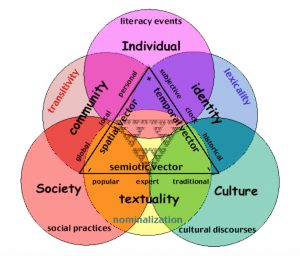Resources
Trilogistic Diagram
Here is a wholistic overview of the three primary and mutually influencing domains of language (Trilogistic Diagram) envisioning an idealized (balanced & homeostatic) version of the forces at work shaping our use of language, and providing the conditions for its growth.
This is the Cultural Fluency Language Assessment Tool which I developed in the 2003. It has since been adapted and expanded through multiple 3rd-party projects involving context-sensitive text analysis. It can also serve as a source for language-based writing prompts in education. For ease of use, I have kept this to two pages. To use it, identify the language features, counting instances by writing down the related letter code (See Part 7, last section on the 2nd page). The frequency of use of particular linguistic items in a given text gives the reader (typically subconsciously) ideas about the tone, style, status, genre and intentions of the writer, and can used to assess the “cultural fluency” of an English speaker or writer. Please use this as a basis for close reading in Assignment 2.
The following is a paper I wrote for the Canadian Theatre Review called “Poetic Terrorism and the Politics of Spoken Word”. It is a version of West Coast Canadian poetry at the end of the last century, in the wake of what Walter J. Ong accurately predicted as “secondary orality” and Marshall McLuhan envisioned as life in a fully mediated environment. The term “poetic terrorism” is borrowed from Hakim Bey’s T.A.Z. The Temporary Autonomous Zone, Ontological Anarchy, Poetic Terrorism.
Event Poems, examples from Technicians of the Sacred, an anthology compiled by that master anthologizer, Jerome Rothenberg.
